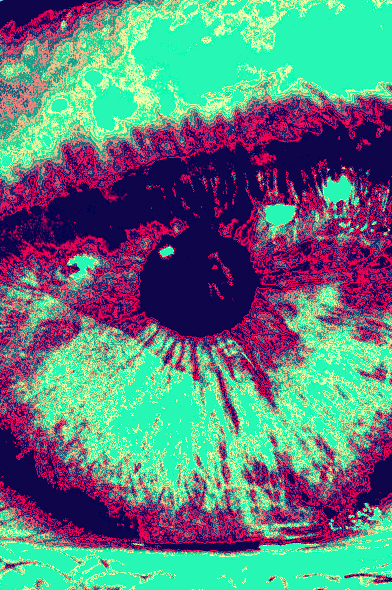Mental images reflect in pupils
 Aphantasia - an inability to create mental images - can be seen in the pupils.
Aphantasia - an inability to create mental images - can be seen in the pupils.
New research shows that visual imagination - or rather, the lack of it - can be verified by measuring pupil dilation, thereby providing the first physiological evidence of aphantasia.
Researchers from UNSW Sydney have found that the pupils of people with aphantasia do not respond when asked to imagine dark and light objects, while those without aphantasia do.
To first gauge the pupillary reflex of non-aphantasic people, the researchers sought 42 study participants, self-reported as having a visual imagination, and fitted them with glasses to track their eye movements and pupil sizes.
Participants were then exposed to bright or dark shapes against a grey background, which predictably evoked pupillary constriction in response to bright shapes (comparable to looking up at a bright sky) and pupillary dilation in response to dark shapes (after switching a light off).
Next, to test visual imagery – the mind’s capacity to visualise objects – participants were asked to simply imagine those same light or dark shapes (with their eyes open, for their pupils to be tracked) and subsequently report the ‘vividness’ of that imagery.
The researchers found that even in response to imagined bright and dark shapes, the participants’ pupils still constricted and dilated appropriately, a pupillary response that was larger in those reporting greater imagery vividness.
“The pupillary reflex is an adaptation that optimises the amount of light hitting the retina,” says Professor Joel Pearson, senior author on the paper.
“And while it was already known that imagined objects can evoke so-called ‘endogenous’ changes in pupil size, we were surprised to see more dramatic changes in those reporting more vivid imagery. This really is the first biological, objective test for imagery vividness.”
Finally, with the link between visual imagery and pupillary response established, the researchers sought to test the effect in aphantasic individuals. The researchers repeated the study with 18 participants self-reporting aphantasia.
Exposing participants to bright and dark shapes, the researchers found that aphantasic individuals exhibited the same pupillary response as the general population: constriction to bright, dilation to dark.
However, during the study’s second component where participants were asked to visualise those same shapes, the pupillary response of aphantasic individuals did not significantly differ in response to imagined dark versus imagined bright objects.
To ensure the aphantasic participants were really attempting imagery, the researchers included a further experimental condition, requesting aphantasic individuals to visualise four shapes, instead of one.
While the pupils of those with aphantasia showed no difference when imagining light versus dark objects, they did show a difference imagining one versus four objects, suggesting more mental effort, thereby negating an explanation of non-participation by aphantasic individuals.
"These findings are also really interesting in regard to memory and aphantasia,” said Dr Rebecca Keogh, postdoctoral research fellow based at Macquarie University and another author of the study.
“Our previous work has shown that aphantasic individuals are able to perform visual working memory tasks, remembering many images for a short period of time, without using visual imagery.
“These findings further highlight the wide variability of the human mind that can often remain hidden until we ask someone about their internal experiences or invent new ways to measure the mind. It reminds us that just because I remember or visualise something one way, doesn’t mean everyone does.”
The researchers are now investigating how this new method could be scaled up and run online to allow a global, efficient and objective measurement of imagery and aphantasia.








 Print
Print